PROTECT YOUR DNA WITH QUANTUM TECHNOLOGY
Orgo-Life the new way to the future Advertising by AdpathwayThe tall, stately stems of hollyhocks are always a lovely sight in the summer garden. Most are biennials, blooming in their second year of growth—just a few return year after year as perennials. Pruning is part of the general maintenance, along with mulching, scouting for pests, and fertilizing. And knowing when to prune is important.
For a few reasons, hollyhocks take on browning leaves and damage throughout the season. When you’re deciding whether to trim brown hollyhock leaves, the first step is determining which of these reasons caused the damage in the first place. This gives you the best indication of which course of action to take.
Timing is also important. Think about your climate and which part of the season your hollyhock is in. Hollyhocks do require pruning at select times, and knowing which time it is lets you know what to do. Should you trim brown and damaged hollyhock leaves? Let’s discuss that right now!
The Watchman Hollyhock

The Watchman Hollyhock Seeds
Chater’s Double Hollyhock

Chater’s Double Hollyhock Seeds
Indian Spring Hollyhock

Indian Spring Hollyhock Seeds

The Short Answer
In general, yes. You should trim brown hollyhock leaves. Overall, removing damaged foliage redirects energy to other parts of the plant that are still growing, rather than to a limp and dead leaf that contributes little. How you prune changes depending on the timing, and the cause of the browning.
The Long Answer
The multiple reasons why hollyhocks take on damaged leaves are your first consideration, followed by the timing of a potential pruning session. Look at these, then act, and you assure your hollyhocks stay healthy and happy.
Hollyhock Rust
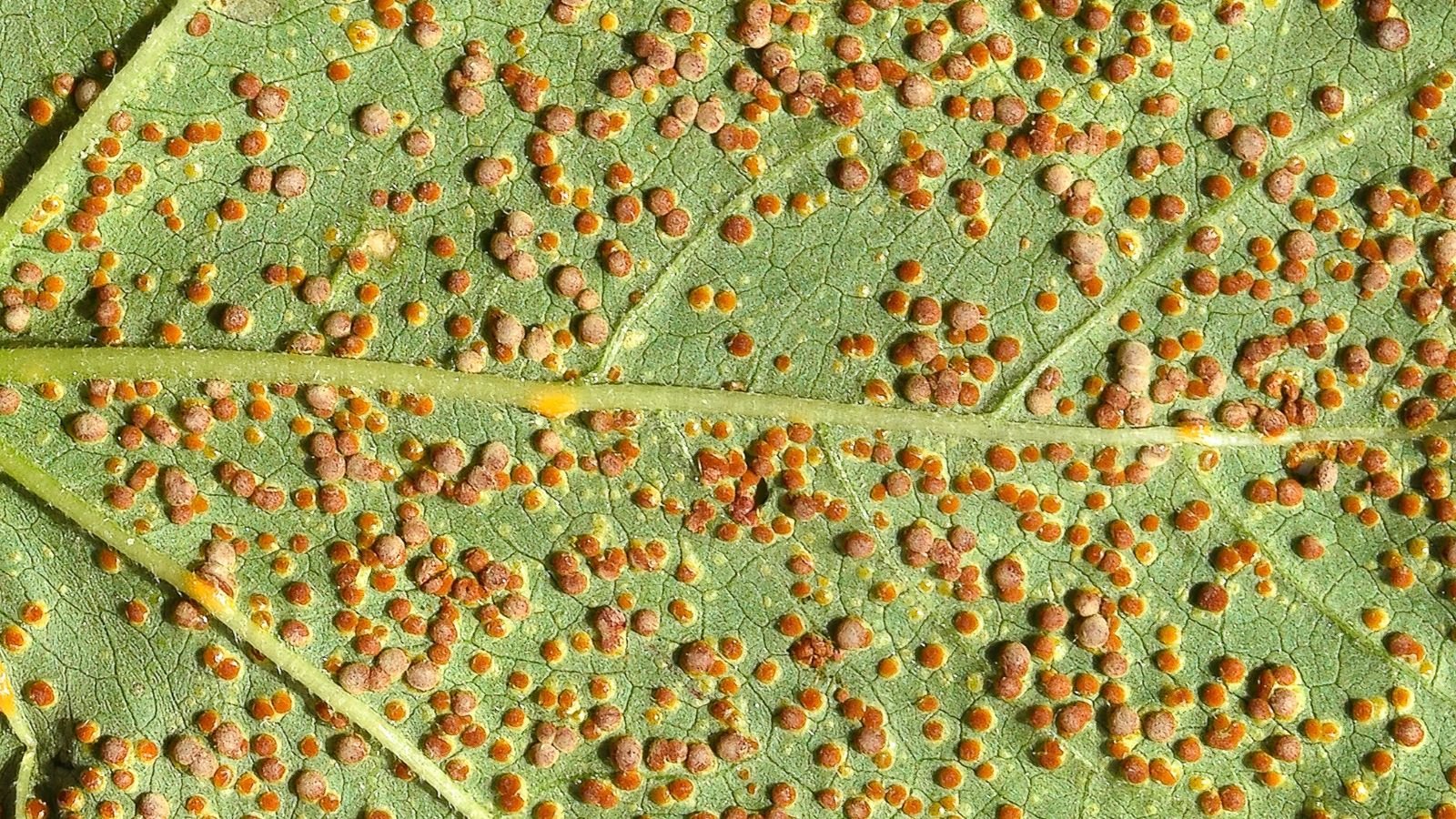 The spores look like orange or yellow spots.
The spores look like orange or yellow spots.A common disease among members of the mallow family is hollyhock rust, caused by the fungal pathogen Leptopuccinia malvacearum. This disease comes into gardens via infected plants and wind-blown spores. Like other fungal diseases, spores can splash onto plants via fungal particles in the soil.
In the height of the season, as temperatures warm, it’s important to scout your plants regularly for pests and diseases. If you notice any orangish or yellowish spots on leaves that are roughly ⅛ to ¼ inch in diameter, it’s likely your plant has taken on some rust. This is an appropriate time to trim brown hollyhock leaves.
When you see the first signs of rust, cut away those diseased leaves ASAP. Put them in the garbage (not the compost pile) or bury them deeply in the ground. Remove any nearby weeds and plant debris and dispose of these in the same manner. Always sterilize your pruners between cuts to avoid spreading the disease further.
Keep an eye on your plants and repeat this process as the season progresses. Heavily damaged plants have got to go, as they are prime for proliferating the fungus. If you catch it early, you can get a handle on it and prevent further damage to the hollyhock patch.
Mechanical Damage
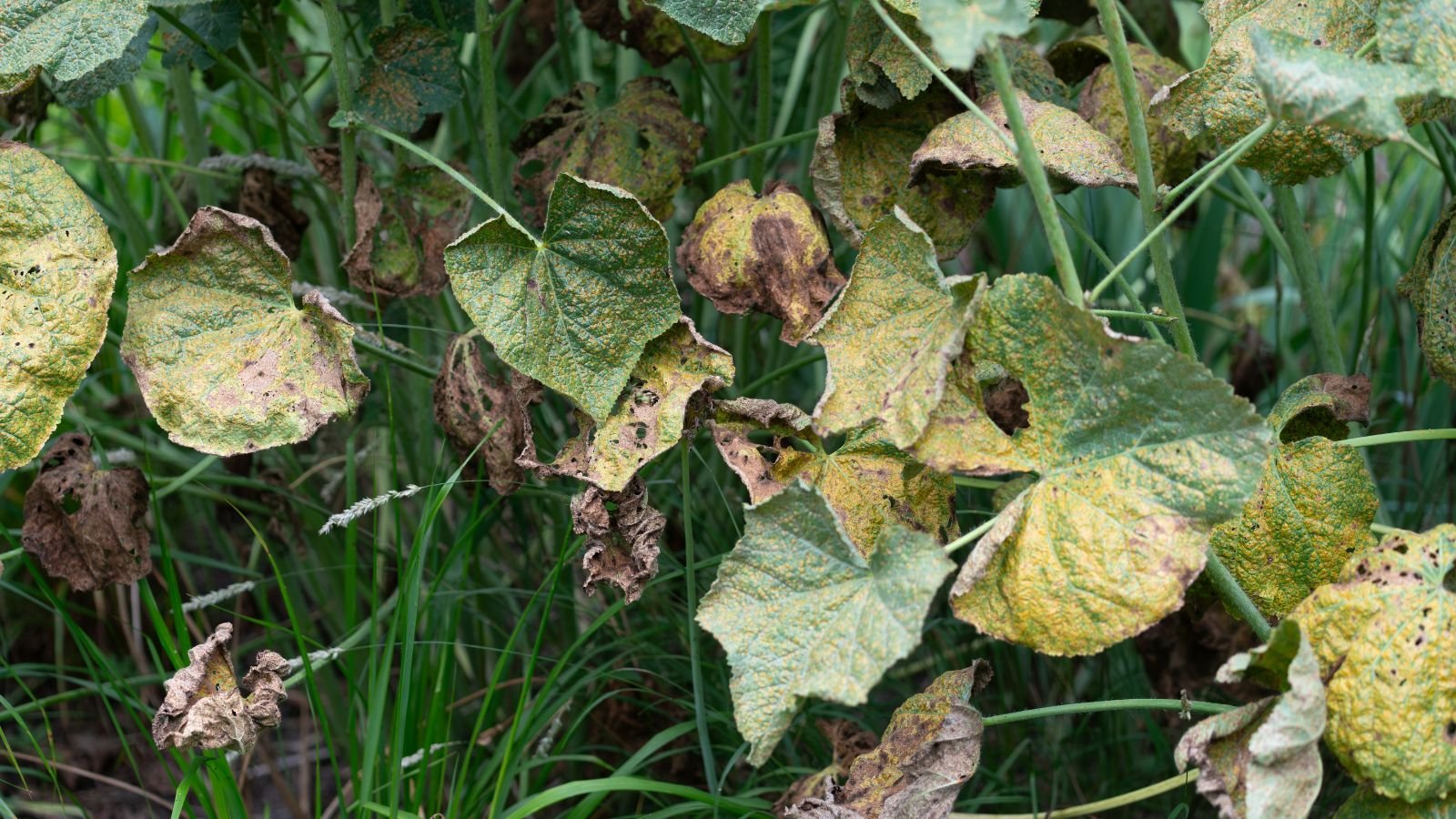 Mowers or trimmers may have nicked your plants, causing dieback.
Mowers or trimmers may have nicked your plants, causing dieback.It happens to the best of us. We’re cutting the grass or weed-eating near a bed of flowers, and whoops! We went too far and damaged a plant within. While it’s best to avoid this as much as possible, it is one reason for browned and damaged leaves.
If you notice a leaf or two that came into contact with your string trimmer or mower blade browning and wilting, snip it off. Leaves that aren’t diseased or covered in pests are good candidates for the compost pile. But throw away leaves that are diseased or pest-ridden.
Whole plants that begin to brown and wilt should be removed. It’s possible you can save a hollyhock when you trim brown hollyhock leaves by removing parts of the plant if the damage occurs early enough in the season. It’s at this point that new green growth can reappear if conditions allow.
In-Season Maintenance
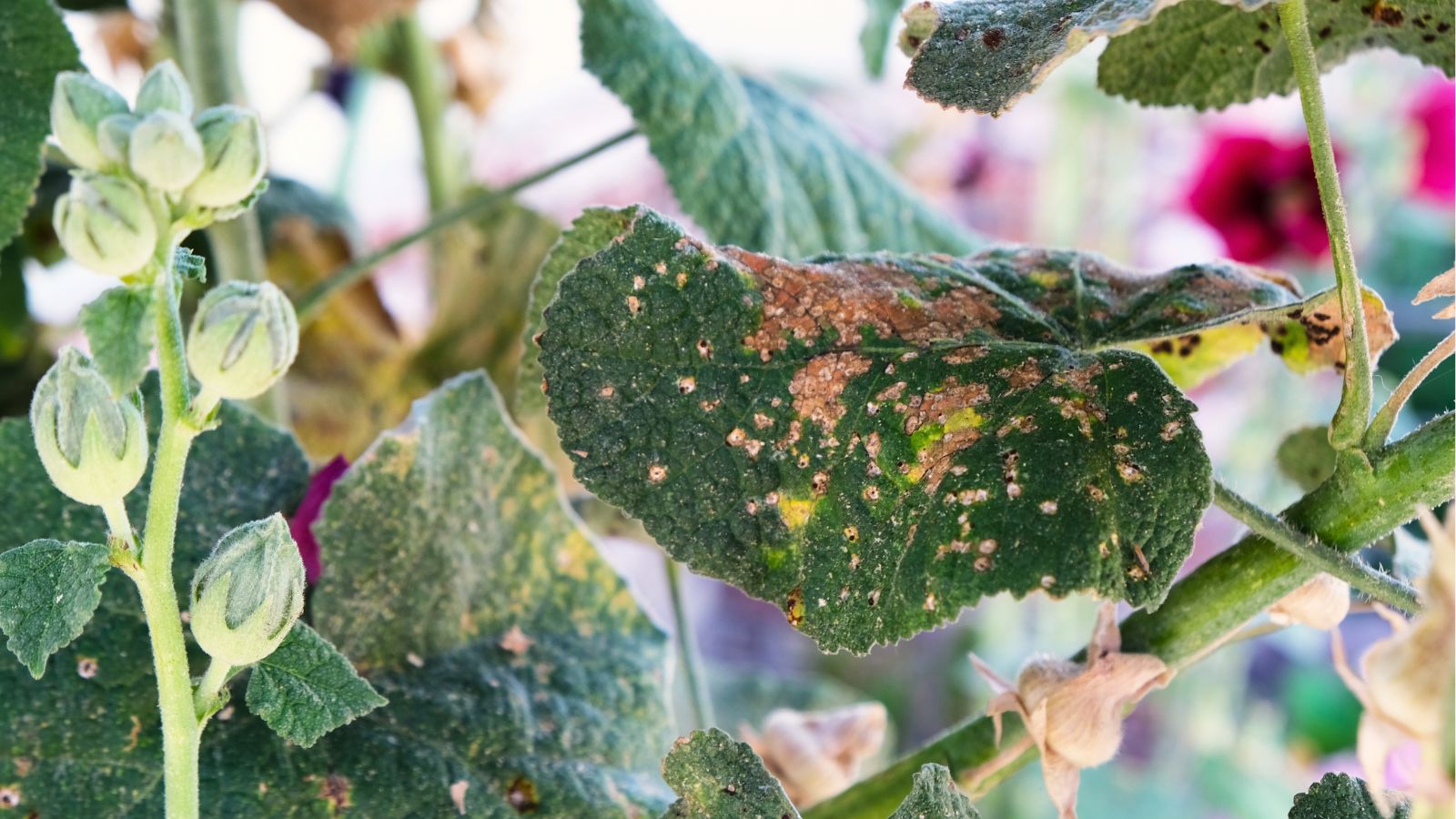 Heat and aging can cause damaged foliage.
Heat and aging can cause damaged foliage.As with many other plants, leaves naturally age and brown throughout the season. Most of the time, you can gently tug these off the plant without the need for pruners or snips. Aging leaves tend to brown from the lower sets, upward. If necessary, cut them off the plant to redirect energy to the flowers and other leaves.
Heat can also cause browning leaves. Here in Texas, it gets hot quickly near the end of spring. Hollyhocks grow here, but it takes a bit to get them through the summer. A browned leaf or two is to be expected in this and similar cases, when heat is a no-brainer in the height of hollyhock season.
For heat, leave as many leaves on the plant as possible. This shades and protects the soil around the plants. A few heat-damaged leaves here and there are normal, and removing them is totally okay. Either gently remove them by hand or cut them. Add some mulch around your hollyhocks at planting, and if you’re expecting a heat wave, the mulch prevents further browning.
End of Season
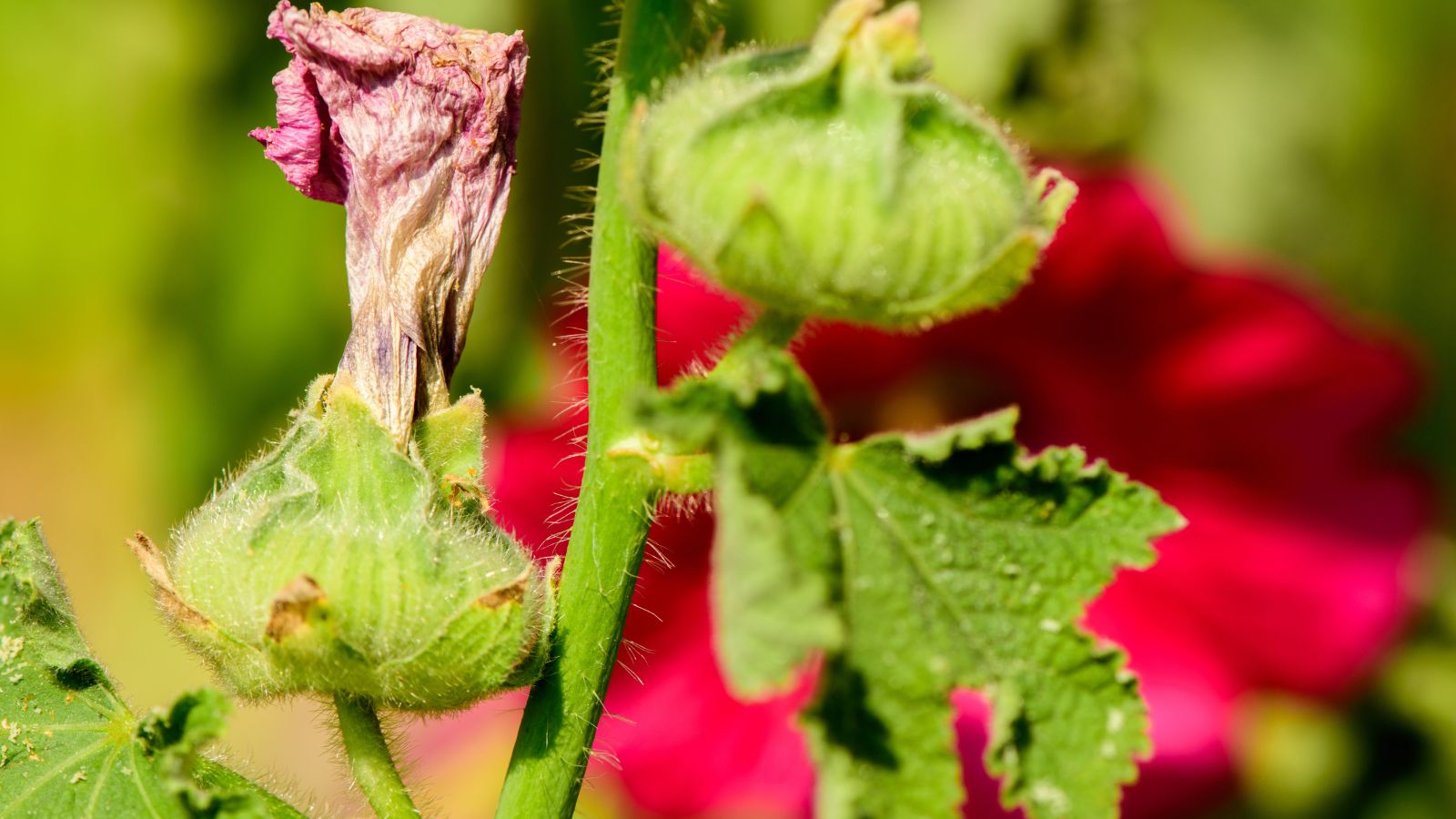 Flowers and foliage naturally fade when frosts are near.
Flowers and foliage naturally fade when frosts are near.At the end of the season, hollyhock flowers fade, and it’s time to prepare them for winter. If you live inside the hardiness range of this stunning plant, they’ll keep their roots through the cold and re-emerge in spring. Give them their best chance at a good head start by cutting their tall stems down when they’re done blooming.
In some areas, cold comes on in spurts. This can cause some cold damage to leaves, which may brown some foliage in fall as the flowers are putting on their last show. If any of these crop up, trim brown hollyhock leaves until the blooming stops. Then, do your end-of-season maintenance.
Pest Damage
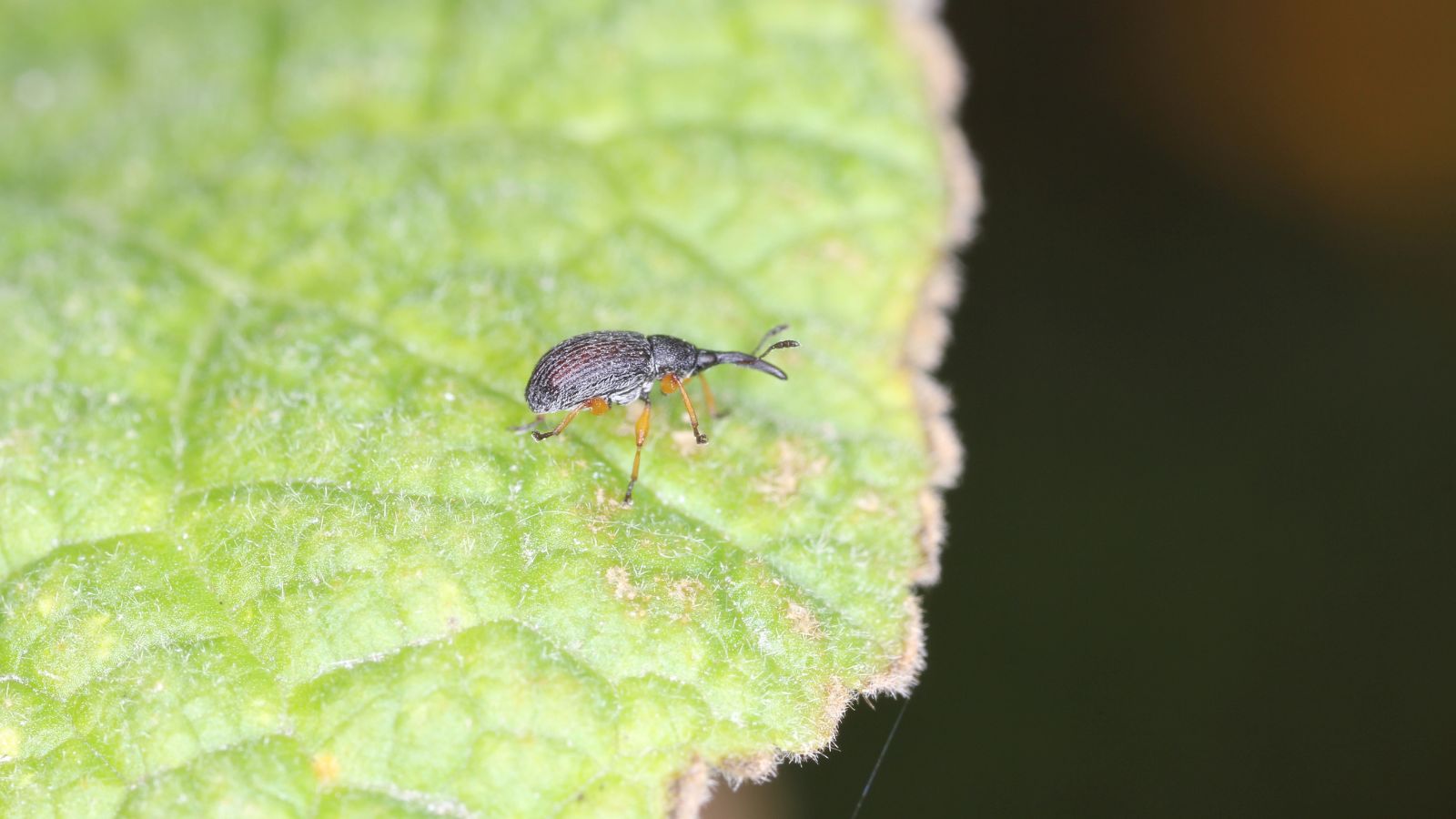 Scale and spider mites are the most common pests.
Scale and spider mites are the most common pests.There are two primary pests that cause leaf browning on hollyhocks: spider mites and scale. Both suck hollyhock juices and initially cause slight discoloration. It’s not until later stages that the entire leaves brown. Of course, if you notice any of these, prune them and dispose of them in the trash.
Use prevention methods to keep these pests at bay. For spider mites, keep the soil sufficiently moist and prevent dust buildup on your hollyhocks. Spray them with a hose in the morning as the sun is rising to help them dry before the heat of the day ensues.
Scale is more complicated. They congregate on branches and at internodes. They also move slowly and look like lesions rather than pests. To deter them, cultivate a healthy garden free of weeds and debris. Pop them off plants with an alcohol-soaked cotton swab and prune away heavy infestations.
Final Thoughts
Brown leaves on outdoor plants are a common sight, and due to their normalcy, there’s no need to be upset when you notice them. Pruning them away is usually a good course of action. But it’s important to determine which part of the season you’re in and what the cause of the damage is before you trim brown hollyhock leaves.
Keep these two things in mind and act appropriately, and you can’t go wrong. You’ll have this lovely biennial in your garden, putting on a stunning display next year.


 4 days ago
6
4 days ago
6





















 English (US) ·
English (US) ·  French (CA) ·
French (CA) ·